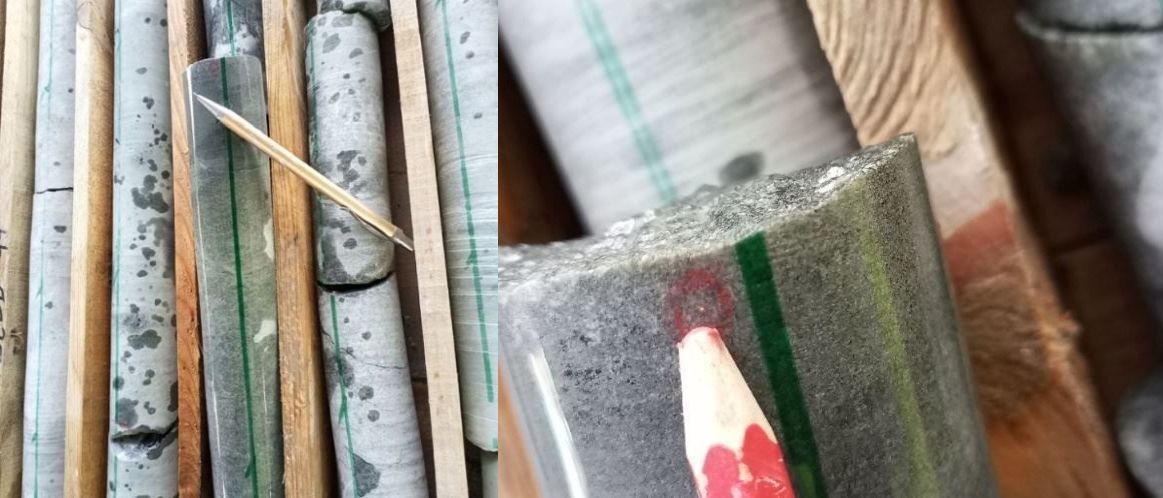Akobo hits visible gold at new record depth
24.03.2022Akobo Minerals announced that it has intersected visible gold at 282 m vertical depth, as well as seeing signs of further potential gold mineralisation in several sections along this latest hole. All indicators point to a belief that the Segele mine can be sustained for much longer than previously envisaged.
 Visible gold mineralisation observed at 282 m depth in SEDD99
Visible gold mineralisation observed at 282 m depth in SEDD99
© Akobo
The previous deepest intersection of gold mineralisation was at 239 m vertical depth. This new intersection is part of an ambitious wildcat resource extension hole and demonstrates that the Segele gold mineralisation is now greater than 400 m ‘down plunge’ from the surface outcrops. In essence, this means that there seems to be more gold down to much greater levels than previously believed.
The success of this hole is testament to the excellent predictive skills and structural understanding developed by the company’s geologists. Their competence is allowing detailed prediction of the gold mineralisation for additional discoveries and will be critical to successful production.
Jørgen Evjen, CEO, Akobo Minerals, stated: “These latest results represent a remarkable success for us. And while this gives us good reason to be excited about the production potential of the Segele mine, equally important is the proof that we understand the local mineralization environment. Our geology team has shown that it can use advanced structural techniques to hit gold mineralization depths never before seen in Southwestern Ethiopia and I believe that we can be confident of considerable success in the future.”
Akobo’s mine development activities are based on its scoping study which envisages a 27-month mine life based purely on the first resource estimate from April 2021 determined by independent mining consultants, SRK. As announced previously, since the release of the scoping study, in addition to the visible gold observations the company has encountered bonanza grade intersections and numerous occurrences of potential host rocks which are demonstrably down-dip from the resource estimate.
The combination of the bonanza grade intersections, host rocks and visible gold is in-line with the general plunge of the mineralization as seen in the resource model. These indicators all point to a belief that the Segele mine can be sustained for much longer than previously envisaged.
This latest hole, number SEDD99, was planned to test for the presence of mineralisation at a much greater depth than before and represents a ‘step back’ of 100 m from the previous drill fence, as opposed to a normal 25 m as previously used.
An updated resource estimate for Segele is expected to be released by end of Q1 and will incorporate as much of the latest drill hole data as possible. The size of the resource estimate increase will be dependent on the estimation process and assay grades, width and thickness, in addition to down-plunge length. However, the result from SEDD99 will not be included in the next mineral resource update as additional drilling will be needed to support an understanding of the mineralization geometry.
